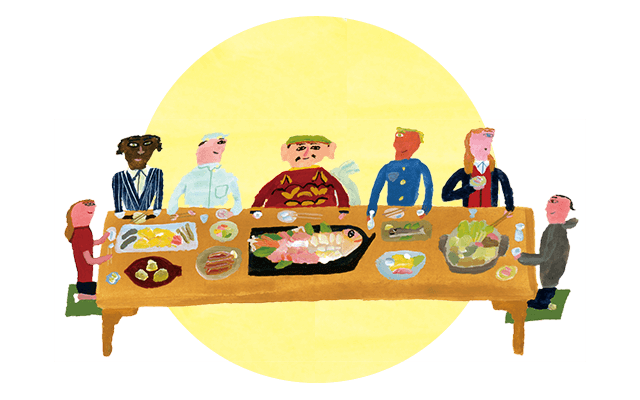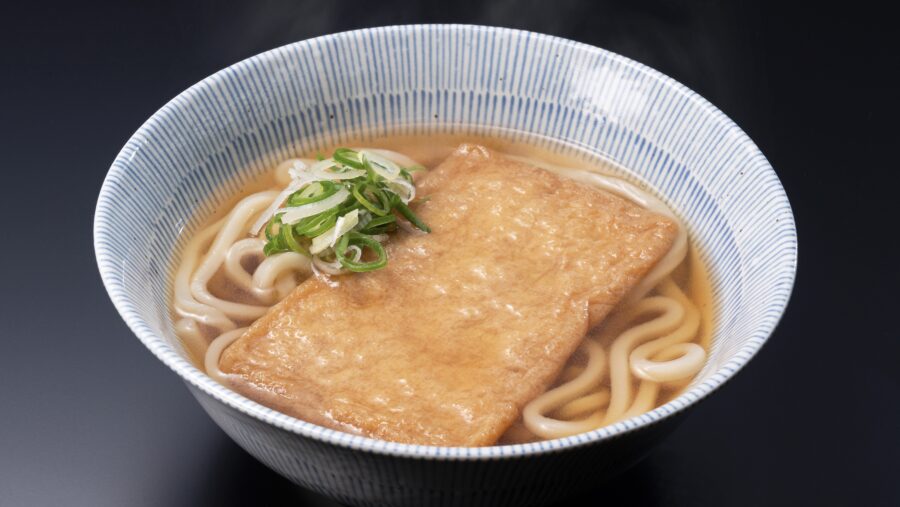
Harima Archives
2022.03.18 The Potential of Usukuchi Soy Sauce

When You Think of Harima, Usukuchi Soy Sauce Comes to Mind
It is said that “people in Kanto use koikuchi (dark-colored) soy sauce and people in Kansai use usukuchi (light-colored) soy sauce.” This symbolizes how soy sauce expresses regional flavors and food cultures. Harima, especially the Tatsuno area, is famous for producing usukuchi soy sauce. Some residents use both types of soy sauce depending on what they are making, but some households only use usukuchi soy sauce. This is how firmly rooted usukuchi soy sauce is in this culture. So, what exactly is the appeal of usukuchi soy sauce?
The Power to Nurture a Joy of Eating
Characterized by its light color, usukuchi soy sauce has become known in recent years for its surprisingly high salt level compared to koikuchi soy sauce. However, it has also been reported that the Kansai region’s udon noodle broth, which uses usukuchi soy sauce, has a lower salt concentration than the udon noodle broth of Tokyo. Research conducted in the past by members of the Center for Advanced Food Science at Hyogo University has found that seasoning with usukuchi soy sauce and taking advantage of broth’s flavor can make low sodium cooking possible. Cooking that harnesses the characteristics of usukuchi soy sauce can make people get used to the flavors of the broth and other ingredients and nurture a sense of taste, which leads to reduced salt intake. Noticing the delicate flavors of ingredients and recognizing them enriches people’s dietary life. Usukuchi soy sauce has such a power to nurture a joy of eating.
Both for Seasoning and Finishing
One trick for using usukuchi soy sauce effectively is finishing a dish. You can use usukuchi soy sauce to adjust the seasoning as if adding a pinch of salt, even for dishes not typically flavored with soy sauce. This adds not only the necessary saltiness to a plate but also umami. Additionally, because of its light color, it does not affect the color of the dish. The use of usukuchi soy sauce is spreading in Japanese cuisine and even to French, Italian, and other cuisines. It is a seasoning that can be used in various scenes, from seasoning to finishing a dish.
Usukuchi Soy Sauce for Sashimi as Well
Fish dishes and soy sauce are deeply linked, regardless of whether the dishes are prepared raw or cooked, from sashimi, sushi, fish simmered in soy sauce, to teriyaki fish. These are cooking methods that utilize the masking effect of soy sauce to eliminate the smell of foodstuff. Western dishes use many spices, but soy sauce has assumed that role since ancient times in Japan. For sashimi in particular, due to freshness being key, soy sauce is indispensable. Dark-colored soy sauce, which eliminates smells, such as koikuchi and tamari, is often used, but for delicate white-fleshed fish or fish that is very fresh, usukuchi soy sauce is also recommended. You can thoroughly enjoy the taste of the fish itself and its freshness as if you were eating sashimi with salt.
Let’s Take Another Look at Usukuchi Soy Sauce
Take udon noodles, for example. The soup is dark and soy sauce-based in Kanto, while in Kansai, the soup is a light-colored broth. The food reflects the characteristics of a region, and that is what food culture is. Distribution is advancing along with the times, allowing us to eat anywhere. On top of that, many recipes use ready-made seasonings such as noodle soup bases, and fewer and fewer households mix and prepare herbs from scratch these days. However, the good thing about usukuchi soy sauce is that it is healthy, convenient, and valuable in many dishes. How about taking another look at it? Just be careful; usukuchi soy sauce ripens with time and changes color and flavor, so using it up quickly after opening it is the secret to enjoying it.



